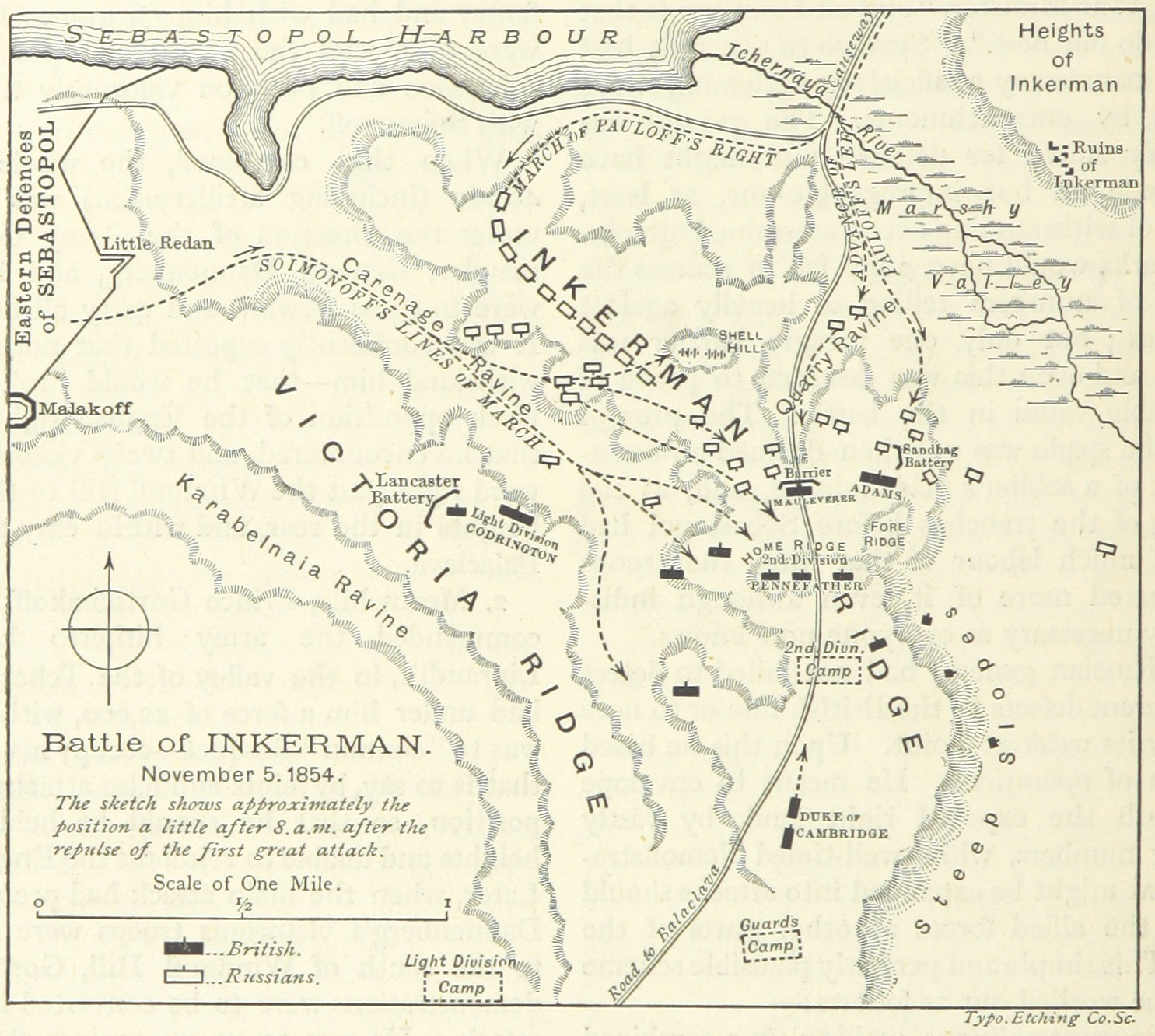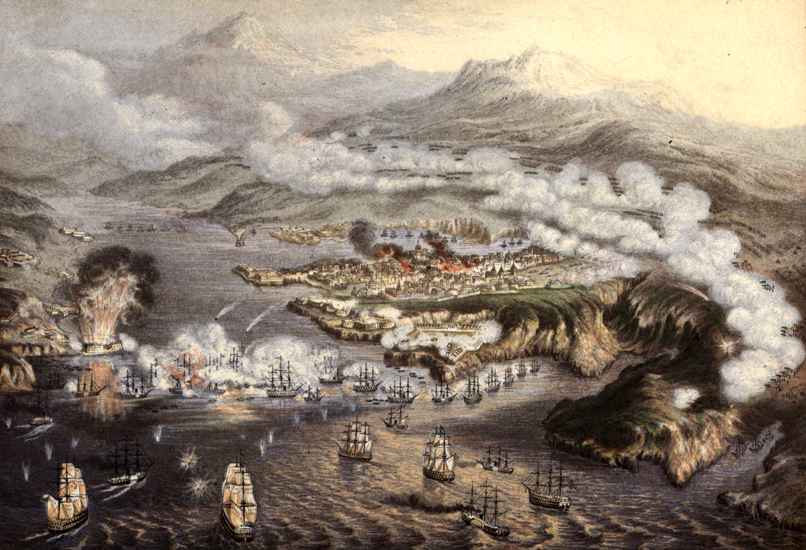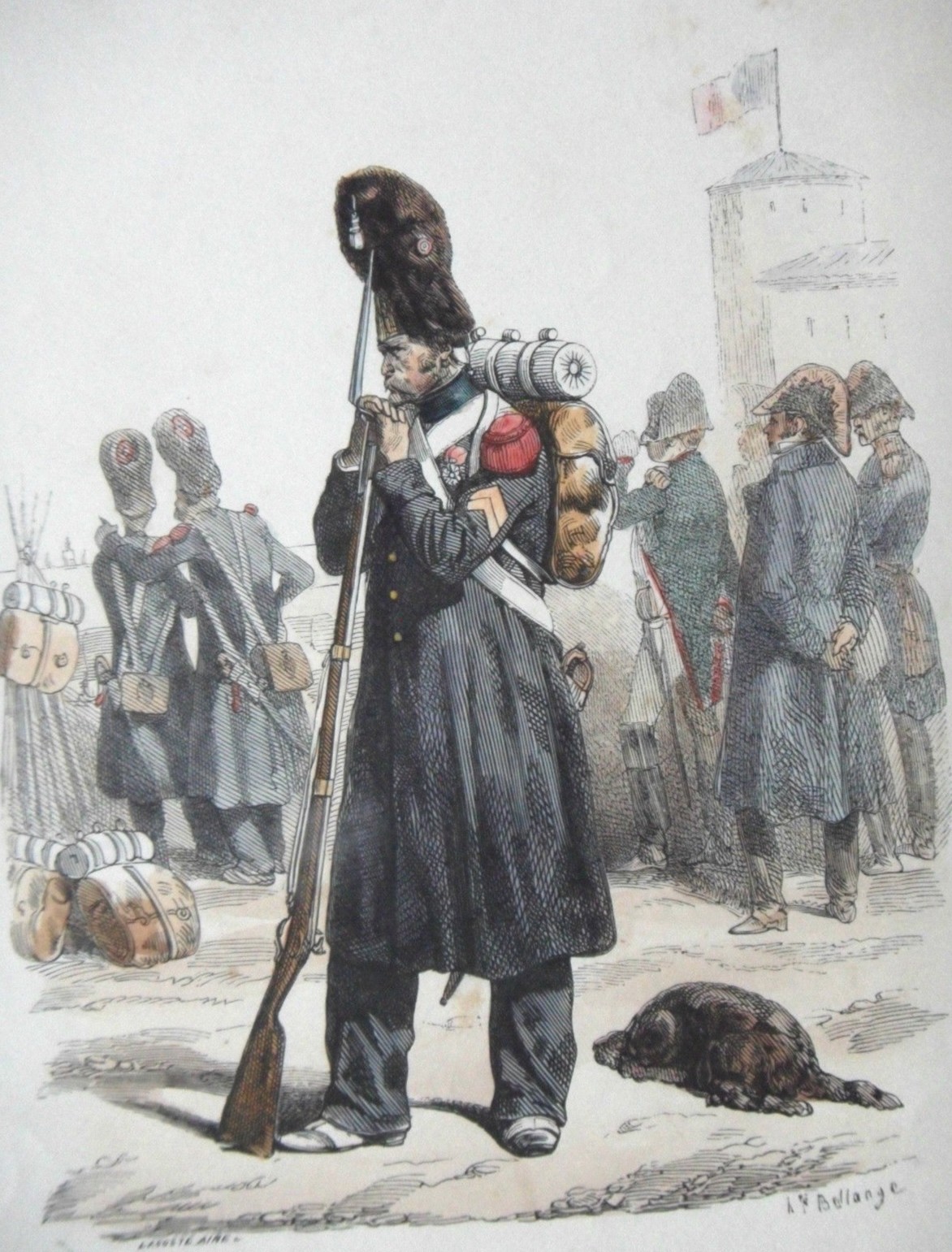|
List Of Commanders Of The British 2nd Division
The 2nd Division was an infantry division of the British Army, which was first formed in 1809 and finally disbanded in 2012. The division was commanded by a general officer commanding (GOC). In this role, he would receive orders from a level above him in the chain of command, and then use the forces within the division to undertake the mission assigned. In addition to directing the tactical battle the division was involved in, the GOC oversaw a staff and the administrative, logistical, medical, training, and discipline of the division. The division had 65 different permanent GOCs over its history that spanned 203 years. Prior to 1809, the British Army did not use divisional formations. As the British military grew in size during the Napoleonic Wars, the need arose for such an implementation in order to better organise forces for administrative, logistical, and tactical reasons. The 2nd Division was formed on 18 June 1809 by Lieutenant-General Arthur Wellesley, and served in t ... [...More Info...] [...Related Items...] OR: [Wikipedia] [Google] [Baidu] |
General Officer Commanding
General officer commanding (GOC) is the usual title given in the armies of the United Kingdom and the Commonwealth (and some other nations, such as Ireland) to a general officer who holds a command appointment. Thus, a general might be the GOC British II Corps (a three-star appointment) or GOC British 7th Armoured Division (a two-star appointment). GOC-in-C A general officer heading a particularly large or important command, such as Middle East Command or the Allied Armies in Italy, may be called a general officer commanding-in-chief (GOC-in-C). The governor of the Imperial Fortress colony of Bermuda was also appointed commander-in-chief of the disproportionately-large Bermuda Garrison. From 1912, when Lieutenant-General Sir George Mackworth Bullock replaced the late Lieutenant-General Sir Frederick Walter Kitchener, through the Second World War, the military office was titled ''General Officer Commanding-in-Chief, Bermuda''. GOC-in-Cs are usually one rank higher than a ... [...More Info...] [...Related Items...] OR: [Wikipedia] [Google] [Baidu] |
Peninsular War
The Peninsular War (1808–1814) was fought in the Iberian Peninsula by Kingdom of Portugal, Portugal, Spain and the United Kingdom of Great Britain and Ireland, United Kingdom against the invading and occupying forces of the First French Empire during the Napoleonic Wars. In Spain, it is considered to overlap with the Spanish War of Independence. The war can be said to have started when the First French Empire, French and History of Spain (1808–1874), Spanish armies Invasion of Portugal (1807), invaded and occupied Portugal in 1807 by transiting through Kingdom of Spain (1810-1873), Spain, but it escalated in 1808 after First French Empire, Napoleonic France occupied History of Spain (1808–1874), Spain, which had been its ally. Napoleon Bonaparte Abdications of Bayonne, forced the abdications of Ferdinand VII of Spain, Ferdinand VII and his father Charles IV of Spain, Charles IV and then installed his brother Joseph Bonaparte on the Spanish throne and promulgated the ... [...More Info...] [...Related Items...] OR: [Wikipedia] [Google] [Baidu] |
Inter-war Period
In the history of the 20th century, the interwar period, also known as the interbellum (), lasted from 11 November 1918 to 1 September 1939 (20 years, 9 months, 21 days) – from the end of World War I (WWI) to the beginning of World War II (WWII). It was relatively short, yet featured many social, political, military, and economic changes throughout the world. Petroleum-based energy production and associated mechanisation led to the prosperous Roaring Twenties, a time of social and economic mobility for the middle class. Automobiles, electric lighting, radio, and more became common among populations in the first world. The era's indulgences were followed by the Great Depression, an unprecedented worldwide economic downturn that severely damaged many of the world's largest economies. Politically, the era coincided with the rise of communism, starting in Russia with the October Revolution and Russian Civil War, at the end of WWI, and ended with the rise of fascism, particularly ... [...More Info...] [...Related Items...] OR: [Wikipedia] [Google] [Baidu] |
Aldershot
Aldershot ( ) is a town in the Rushmoor district, Hampshire, England. It lies on heathland in the extreme north-east corner of the county, south-west of London. The town has a population of 37,131, while the Farnborough/Aldershot built-up area, Aldershot Urban Area – a loose conurbation, which also includes other towns such as Camberley and Farnborough, Hampshire, Farnborough – has a population of 243,344; it is the thirtieth-largest urban area in the United Kingdom, UK. Aldershot is known as the ''Home of the British Army'', a connection which led to its rapid growth from a small village to a Victorian era, Victorian town. History Early history The name is likely to have derived from alder trees found in the area (from the Old English 'alor-sceat' meaning copse, or projecting piece of land, featuring alder trees). Any settlement, though not mentioned by name, would have been included as part of the Hundred (division), Hundred of Crondall referred to in the Domesday Book ... [...More Info...] [...Related Items...] OR: [Wikipedia] [Google] [Baidu] |
Guerrilla Warfare
Guerrilla warfare is a form of unconventional warfare in which small groups of irregular military, such as rebels, partisans, paramilitary personnel or armed civilians, which may include recruited children, use ambushes, sabotage, terrorism, raids, petty warfare or hit-and-run tactics in a rebellion, in a violent conflict, in a war or in a civil war to fight against regular military, police or rival insurgent forces. Although the term "guerrilla warfare" was coined in the context of the Peninsular War in the 19th century, the tactical methods of guerrilla warfare have long been in use. In the 6th century BC, Sun Tzu proposed the use of guerrilla-style tactics in '' The Art of War''. The 3rd century BC Roman general Quintus Fabius Maximus Verrucosus is also credited with inventing many of the tactics of guerrilla warfare through what is today called the Fabian strategy, and in China Peng Yue is also often regarded as the inventor of guerrilla warfare. Guerrilla wa ... [...More Info...] [...Related Items...] OR: [Wikipedia] [Google] [Baidu] |
Conventional Warfare
Conventional warfare is a form of warfare conducted by using conventional weapons and battlefield tactics between two or more sovereign state, states in open confrontation. The forces on each side are well-defined and fight by using weapons that target primarily the opponent's military. It is normally fought by using conventional weapons, not chemical weapon, chemical, biological agent, biological, radiological warfare, radiological, or nuclear weapons. The general purpose of conventional warfare is to weaken or destroy the opponent's military, which negates its ability to engage in conventional warfare. In forcing capitulation (surrender), capitulation, however, one or both sides may eventually resort to unconventional warfare tactics. History Formation of state The state was first advocated by Plato but found more acceptance in the consolidation of power under the Roman Catholic Church. European monarchs then gained power as the Catholic Church was stripped of Temporal power ... [...More Info...] [...Related Items...] OR: [Wikipedia] [Google] [Baidu] |
Relief Of Ladysmith
The Relief of Ladysmith consisted of multiple efforts to relieve the city of Ladysmith by General Sir Redvers Buller during the Second Boer War. Buller and the Natal Field Force attempted to relieve the city through multiple offensive actions. The city had been under siege since 2 November, 1899, and Britain had sent General Buller to relieve the city. After consolidating his Forces at Estcourt through most of November and early December, he began his relief of the city. The attempts to relieve the city started on 15 December at the Second Battle of Colenso, in which the British forces were repelled by the Boers on the Tugela River. The next two attempts were repulsed by the Boers ( Spion Kop and Vaal Krantz), however at the Battle of Pieters Hill in February 1900, the Boers were eventually beaten from the city and forced to withdraw to Botha's Pass near Newcastle. Buller and his Forces entered the city on February 28, 1900, officially ending the Siege of Ladysmith. Geogra ... [...More Info...] [...Related Items...] OR: [Wikipedia] [Google] [Baidu] |
Battle Of Inkerman
The Battle of Inkerman was fought during the Crimean War on 5 November 1854 between the allied armies of Britain and France against the Imperial Russian Army. The battle broke the will of the Russian Army to defeat the allies in the field, and was followed by the Siege of Sevastopol. The role of troops fighting mostly on their own initiative due to the foggy conditions during the battle has earned the engagement the name "The Soldier's Battle." Prelude to the battle The allied armies of Britain, France, Sardinia, and the Ottoman Empire had landed on the west coast of Crimea on 14 September 1854, intending to capture the Russian naval base at Sevastopol. The allied armies fought off and defeated the Russian Army at the Battle of Alma, forcing them to retreat in some confusion toward the River Kacha. While the allies could have taken this opportunity to attack Sevastopol before Sevastopol could be put into a proper state of defence, the allied commanders, British general FitzRoy ... [...More Info...] [...Related Items...] OR: [Wikipedia] [Google] [Baidu] |
Siege Of Sevastopol (1854–1855)
The siege of Sevastopol (at the time called in English the siege of Sebastopol) lasted from October 1854 until September 1855, during the Crimean War. The allies ( French, Sardinian, Ottoman, and British) landed at Eupatoria on 14 September 1854, intending to make a triumphal march to Sevastopol, the capital of the Crimea, with 50,000 men. Major battles along the way were Alma (September 1854), Balaklava (October 1854), Inkerman (November 1854), Tchernaya (August 1855), Redan (September 1855), and, finally, Malakoff (September 1855). During the siege, the allied navy undertook six bombardments of the capital, on 17 October 1854; and on 9 April, 6 June, 17 June, 17 August, and 5 September 1855. The siege of Sevastopol is one of the last classic sieges in history. The city of Sevastopol was the home of the tsar's Black Sea Fleet, which threatened the Mediterranean. The Russian field army withdrew before the allies could encircle it. The siege was the culminating struggle for ... [...More Info...] [...Related Items...] OR: [Wikipedia] [Google] [Baidu] |
Russian Empire
The Russian Empire was an empire that spanned most of northern Eurasia from its establishment in November 1721 until the proclamation of the Russian Republic in September 1917. At its height in the late 19th century, it covered about , roughly one-sixth of the world's landmass, making it the list of largest empires, third-largest empire in history, behind only the British Empire, British and Mongol Empire, Mongol empires. It also Russian colonization of North America, colonized Alaska between 1799 and 1867. The empire's 1897 census, the only one it conducted, found a population of 125.6 million with considerable ethnic, linguistic, religious, and socioeconomic diversity. From the 10th to 17th centuries, the Russians had been ruled by a noble class known as the boyars, above whom was the tsar, an absolute monarch. The groundwork of the Russian Empire was laid by Ivan III (), who greatly expanded his domain, established a centralized Russian national state, and secured inde ... [...More Info...] [...Related Items...] OR: [Wikipedia] [Google] [Baidu] |
Official History
An official history is a work of history which is sponsored, authorised or endorsed by its subject. The term is most commonly used for histories which are produced for a government. The term also applies to commissions from non-state bodies including histories of commercial companies. An official biography (one written with the permission, cooperation and sometimes the participation of its subject or heirs) is an authorised biography. Official histories frequently have the advantage that the author has had access to archives, been allowed to interview subjects and use other primary sources closed to independent historians. Because of the close relationship between author and subject, such works may be (or be perceived to be) partisan in tone and to lack historical objectivity. Such bias varies and some official histories have been called exercises in propaganda; in other cases the authors have retained a measure of independence. Early official histories There is a tradition of hi ... [...More Info...] [...Related Items...] OR: [Wikipedia] [Google] [Baidu] |
Imperial Guard (Napoleon I)
The Imperial Guard ( French: ''Garde Impériale'') was the imperial guard formation of the French Imperial Army. Under the direct command of Napoleon, the formation expanded considerably over time and acted as his personal bodyguard and tactical reserve. The Imperial Guard was divided into a general staff and infantry, cavalry and artillery regiments along with battalions of sappers and marines. It distinguished between experienced veterans and less experienced members by being separated into three formations: the Old Guard, Middle Guard and Young Guard. The Young Guard was virtually annihilated in the Battle of Krasnoi during the French invasion of Russia. History The Guard had its origin in the Consular Guard (''Garde des consuls''), created on 28 November 1799 by the union of the Guard of the Directory (''Garde du Directoire exécutif'') and the Grenadiers of the Legislature (''Grenadiers près de la Représentation nationale''). These formations had for principal p ... [...More Info...] [...Related Items...] OR: [Wikipedia] [Google] [Baidu] |







